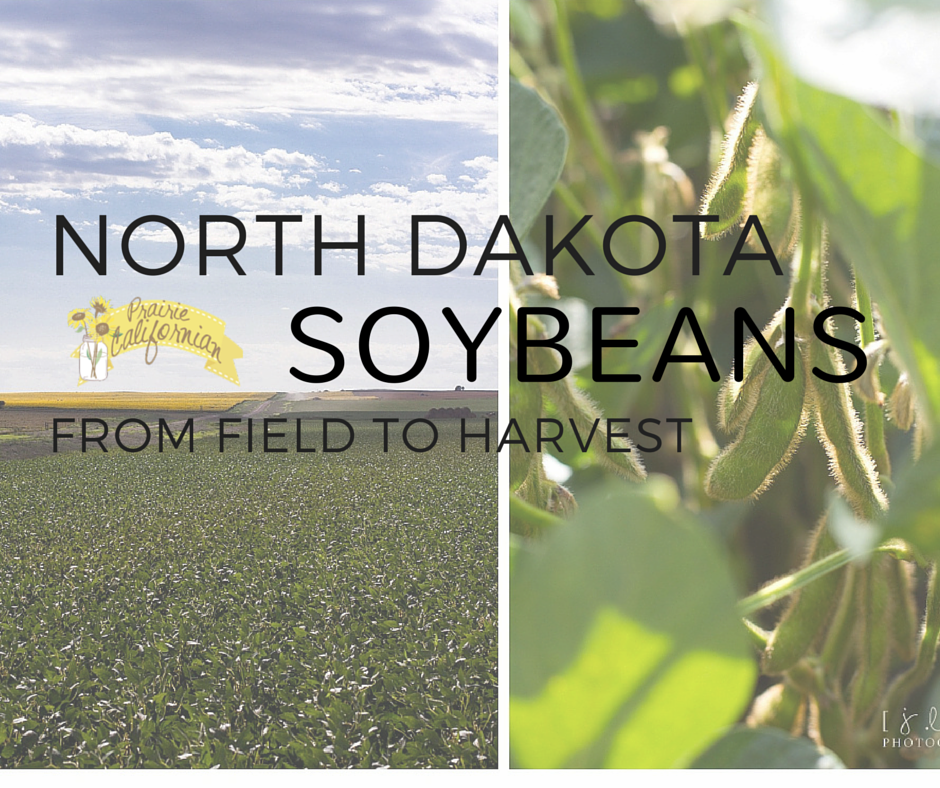
Did you know it only takes soybeans about a week to ten days after being planted before they begin to emerge..?
These soybeans were planted with that same machine we saw planting the wheat from this post.. A drill! Basically what it does it deposit a seed and some fertilizer in the soil in measured increments. Distance between rows as well as between each plant is important and the drill allows for that distance to remain consistent while planting acre upon acre. As the soybean plants grow they begin to branch out and look more like a bush, filling the gaps between rows.
About early to mid July and just when the soybeans begin to look like the photo above, they bloom. Our earliest blooms this year were dated July 6th and continued on until mid-July. These blooms are what turn into pods that contain the soybean seeds which we eventually harvest. Think much like a green bean. There’s a fuzzy outer shell, called a pod and inside are the seeds.
Soybean pods average about 3 seeds per pod and are typically about one to three inches long. 4 or more seeds in a pod can occur but it’s not common. Anyone like edamame…? It is at this time in their production that these soybeans could be considered edamame! Edamame is basically an immature soybean pod that has been boiled and served with salt. But since we aren’t after edamame but the mature soybean seeds, the plants continue to grow.
In the above photo (left) you can see inside a pod that has been split open. One seed is visible. And the photo on the right is showing you the soybean’s root nodules. Here my farmer is checking to make sure the plant is producing its own nitrogen through it’s root nodules. These nodules contain a bacteria that produces nitrogen which is essential to the plant growing and competing against other plants. This is fairly common in the plant family known as legumes (also including clovers, alfalfa, and peanuts).
The soybeans continue to grow until they start to naturally dry out or mature. Upon asking my farmer when they are ready to harvest, he tells me once there is no more green in the fields. In the above photo you can see that the field still contains some green meaning that the soybeans haven’t fully reached peak for harvesting. The photo on the right is a stark comparison to the above green soybean pods. As you can see, the outer shell of the pod has become dry, thin, and delicate. And that the seeds have also turned color and plumped up. Deciding when to harvest can be tedious especially in a state like North Dakota which is prone to high winds. High winds and quick changes in temperature and humidity can both knock soybean pods off the plants or it can cause the pods to simply abort the seeds even before they’ve reached full maturity for harvest.
Once the soybeans are ready to harvest, it’s time to get that Big Green Monster out again. Or in farmer’s terms, a combine. A combine is simply a harvester. The combine gets it’s name from combining three separate operations required to harvest crops into a single machine. This machine combines reaping (basically cutting of the crop), threshing (loosing the seed from the pod), and winnowing (basically separating the seeds from the pod and discarding the pods). And if you remember this post on Wheat Harvest, you will notice that we harvest soybeans with the same header that we harvest wheat. This header is called a Flex Header meaning that it flexes to the contours of the ground. This is a good thing because when we are harvesting soybeans, the header is basically running along the ground. So if say, we were to come across a hill and the header didn’t flex, we would end up with a broken combine.
And exactly like when we were harvesting wheat, this head has a set of knives that run back and forth once they are turned on. These knives cut the soybean plants and the big black reel basically feeds the plants into the knives while an auger moves the plants and pods into the machine. Most of the stalk and the rest of plant that isn’t used is basically chopped and thrown back on the field out the back of the combine. You can see the debris coming out of the back of the combine as my farmer is coming towards me. Harvest is a dusty, dirty job no matter what crop you’re harvesting but I think soybeans are by far the worst. As evening falls, the dust from the combine hangs in the air and it’s such a fine dust that covers literally everything. Not only is the combine going down the field cutting the soybean plants, it is also producing numbers. All kinds of numbers.
This is known as a yield monitor and it sits inside the cab of the combine. What this monitor shows us is everything we need to know about our production. This particular screen is showing us the yield map. As we drive along the field and harvest, it maps for us where we’ve already been. The colors on the screen coincide with yields. Purple and red being low yields, orange being average, and green and yellow being above average or higher yields. Average yield for soybeans is anywhere between 20 to 40 bushels per acre. And if you remember from the wheat post, a bushel is a dry unit of measurement that approximately equals out to 8 gallons.
Once the back of the combine is full of soybean seeds, the combine unloads onto the grain cart. If you don’t remember from the wheat post, the grain cart is basically a tractor hooked up to this cart. What it allows is for the combine to continue harvesting without stoppping. Once the hopper in the back of the combine is full, the grain cart drives along side the combine and the combine unloads all of the seeds (via an auger) from the hopper into the grain cart! Smart, right!? The grain cart then goes and unloads the seeds onto a semi truck which is parked on the outskirts of the field. And if you’re good, this process continues at perfect timing. So the combine is never waiting on anything, it can just harvest away without having to stop! This is important because sometimes weather isn’t permitting and harvest needs to speed up in order to finish before a big storm, or say high winds.
So we plant and harvest all these soybean seeds…? What happens to them once we send them to the elevator…? Approximately 85% of the world’s soybean crop is processed into soybean meal and vegetable oil. This absolutely fascinated me. I had never thought about vegetable oil basically being soybean oil, until I read the label. Soy ingredients have become staples in the food manufacturing industry including a range of products like margarines, salad dressings, canned foods, sauces, bakery goods, and processed fried foods. Interestingly enough, soy has also provided us a means to protein fortify foods.
According to Soyatech, “In addition to being used for their functional characteristics, soy ingredients are used to add nutrition to processed foods; some isolated soy proteins, for instance, are specifically designed to be used in acidic or clear beverages – products that could not, until recently, be protein-fortified.” Soybeans are also processed and being used for biodiesel as well. The uses for soy are endless, it can even be found in inks, plastics, candles, textiles, cleaning products. Start looking at labels and you will become aware of how important soy is in our lives.
After the soybeans are pressed for their oil, the byproduct is soybean meal with 98% of the U.S. soybean crop used for livestock feed, such as for hogs and poultry. In fact, the United States is the number one producer of soybeans with 45 percent of the world’s soybean acreage and 55 percent of production in the United States!
With the invention of the combine, we can (on average) harvest around 600-800 bushels of soybeans an hour. One bushel of soybeans produces 1.5 gallons of soy oil and 48 pounds of soybean meal which then supplies 21 pounds of animal feed. If we do some math here, in one hour we can produce enough soybeans to make 1,050 gallons of soy oil, 33,600 pounds of soybean meal, and 14,700 pounds of animal feed. That’s just ONE hour! Sometimes we will harvest for 12 hours in a day! Or more! And sometimes for a span of a week!
Without our farm and the many across the nation, we wouldn’t have vegetable oil, crayons, or being able to experiment with biodiesel. Who knew!?
Check out our video from soybean harvest below:
[youtube http://www.youtube.com/watch?v=Y96YlLX2v7U&w=420&h=315]
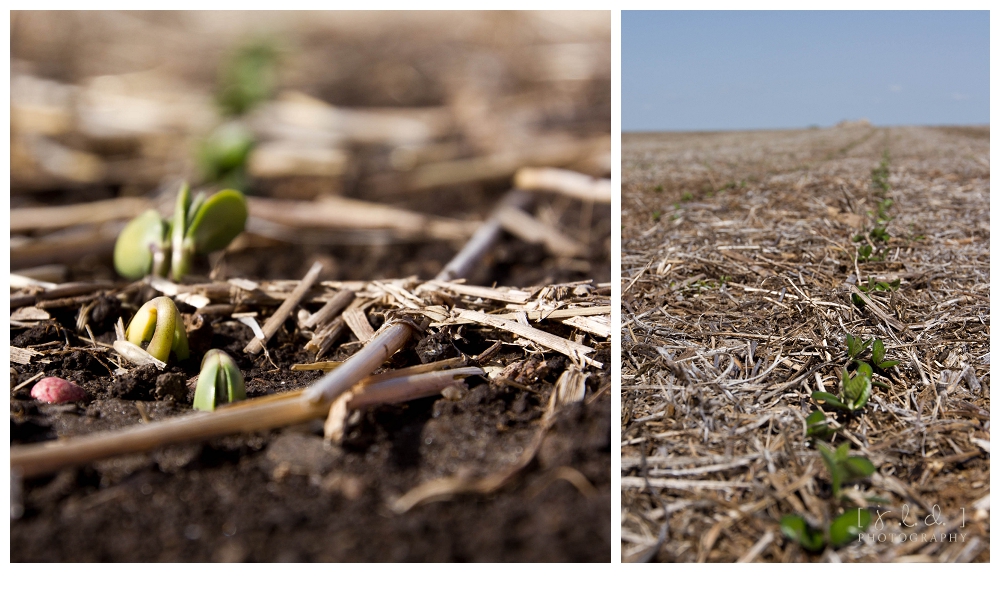

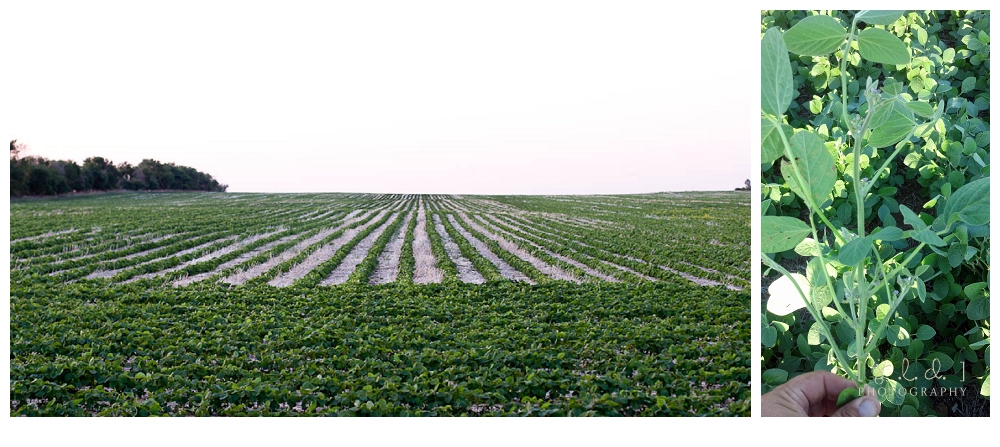
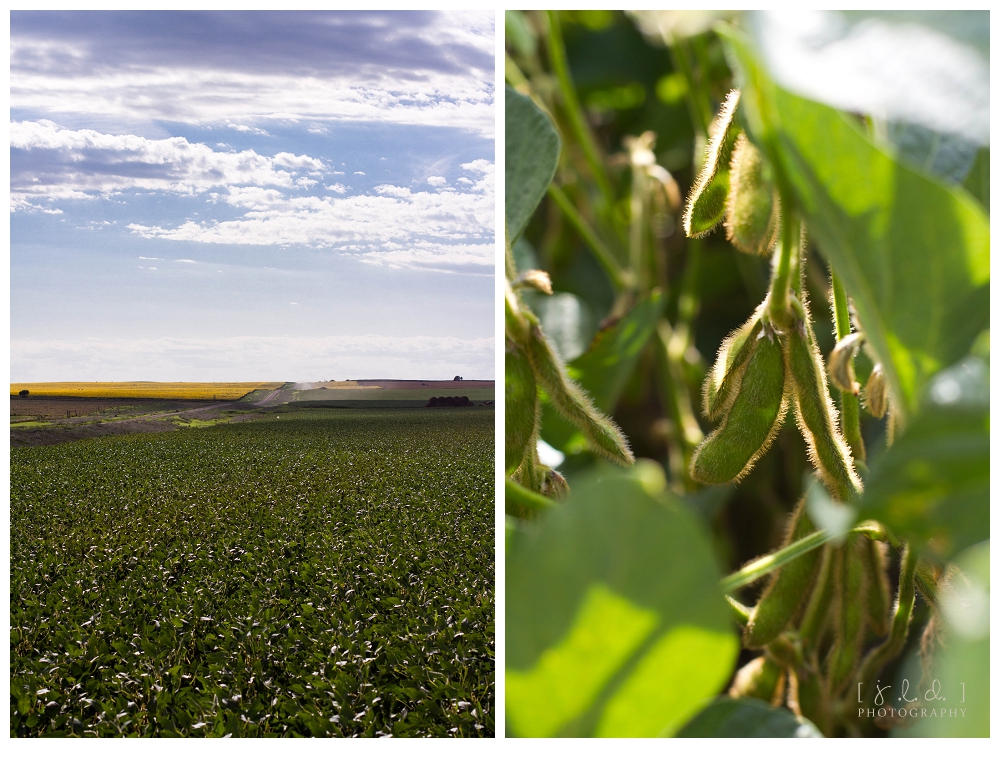
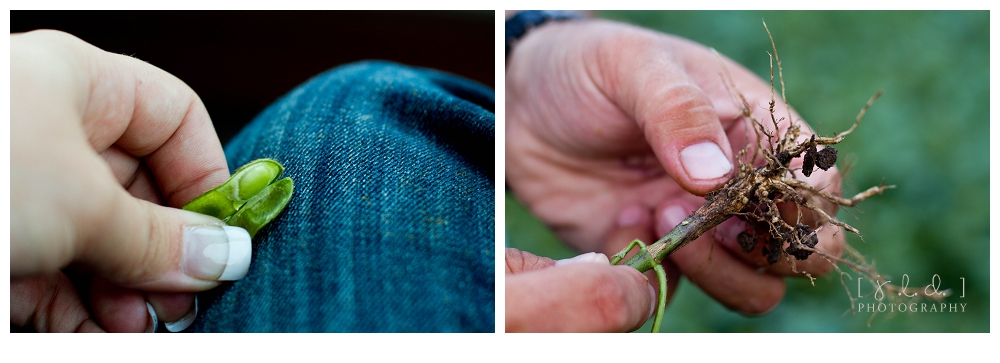
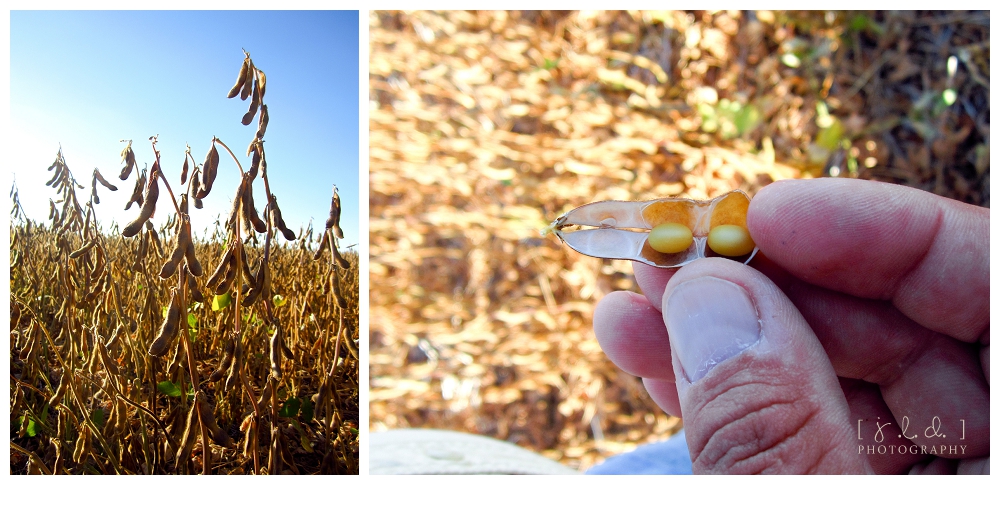

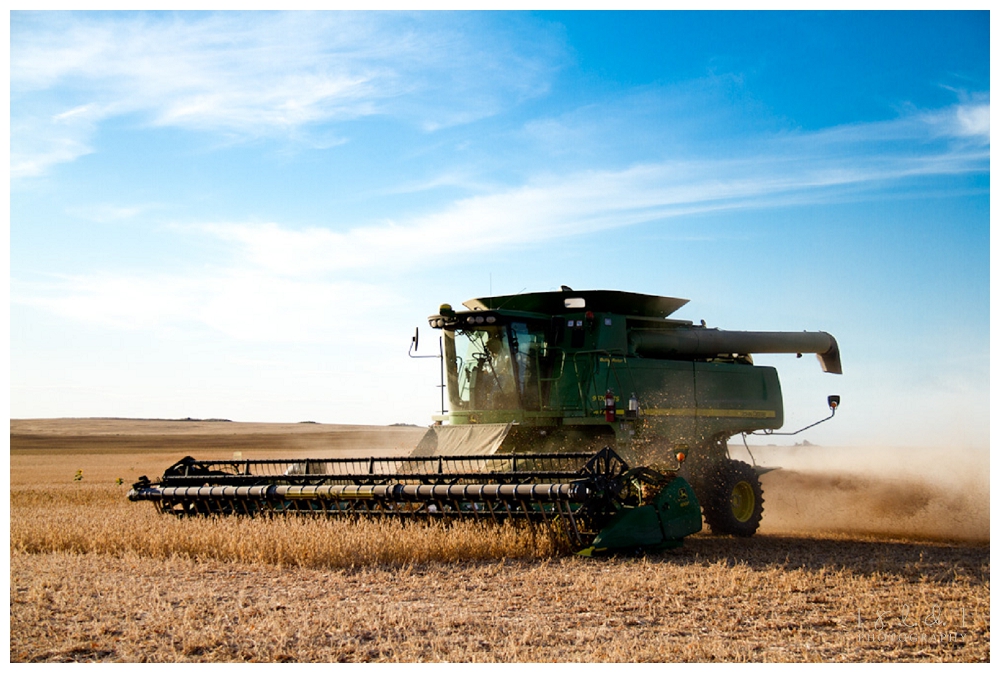
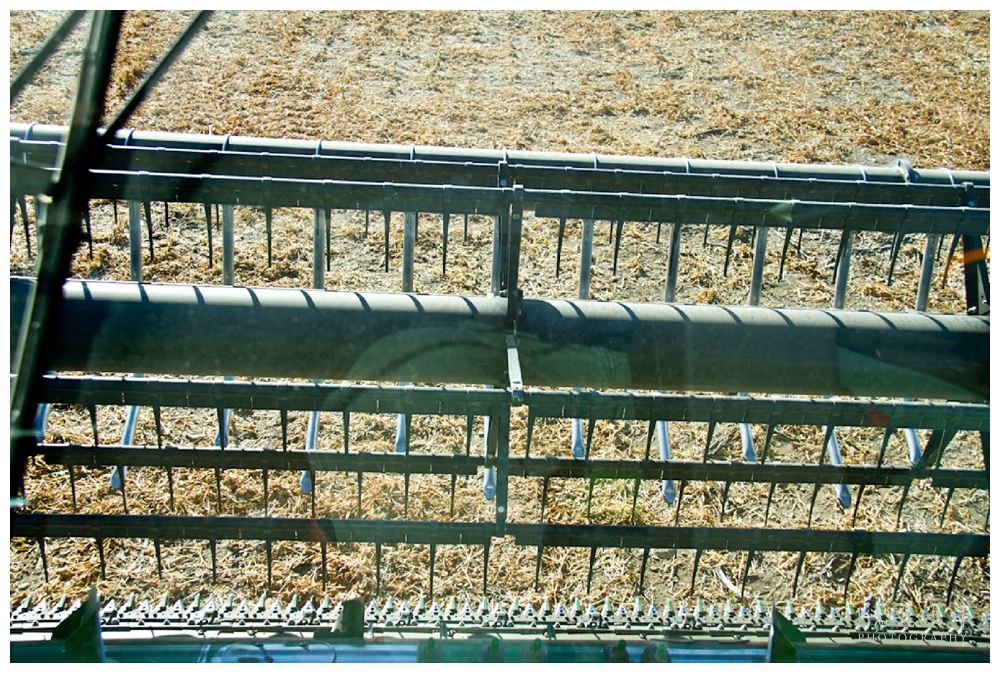
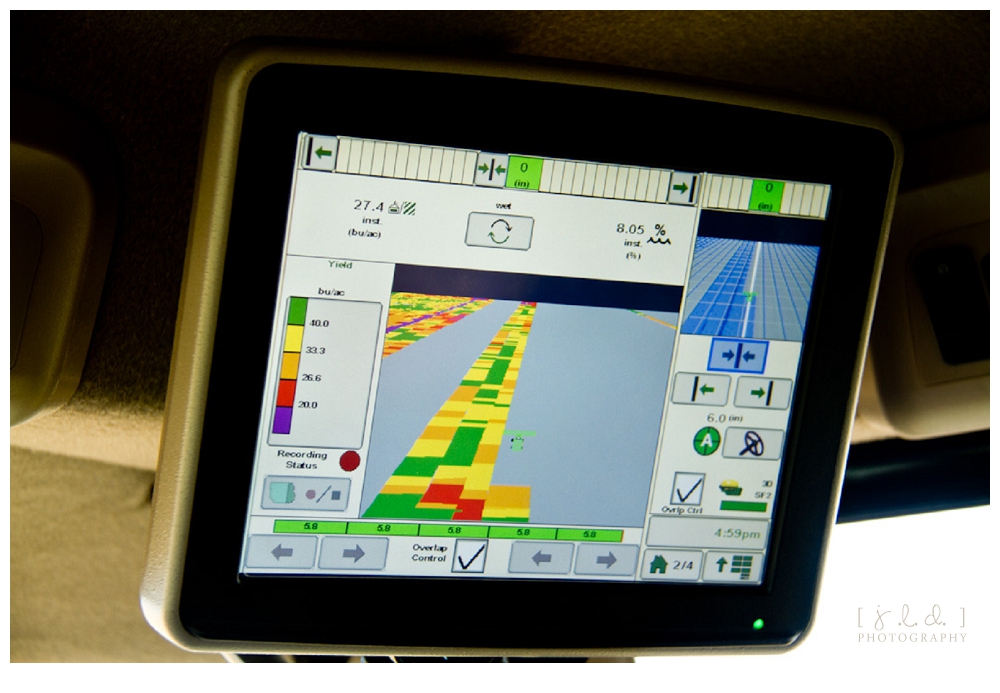
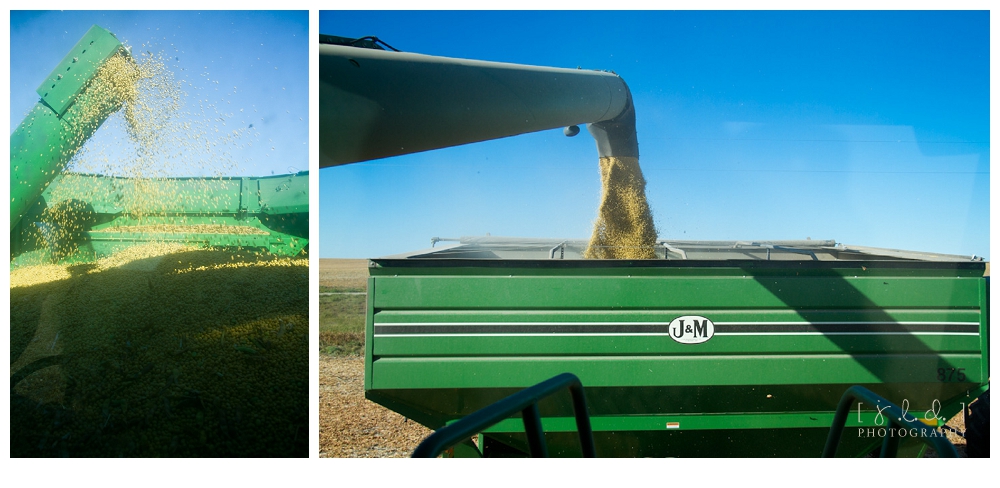
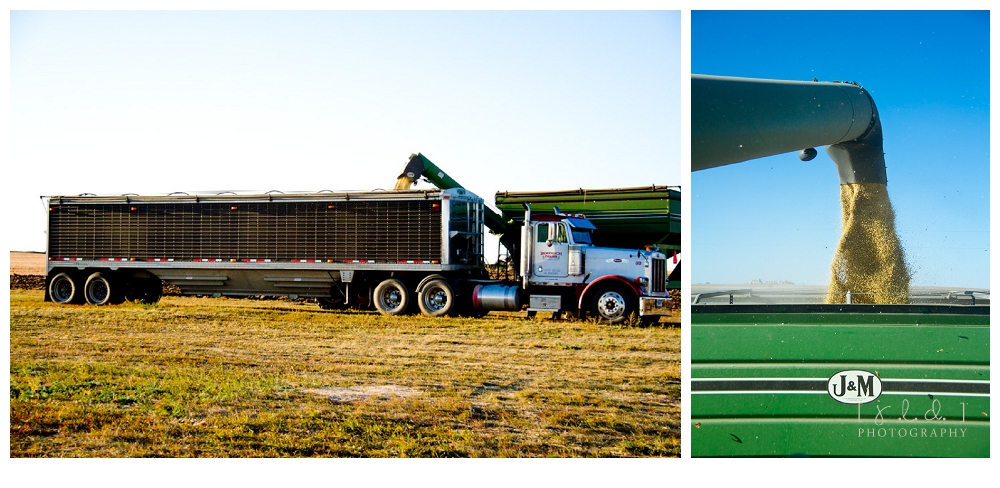
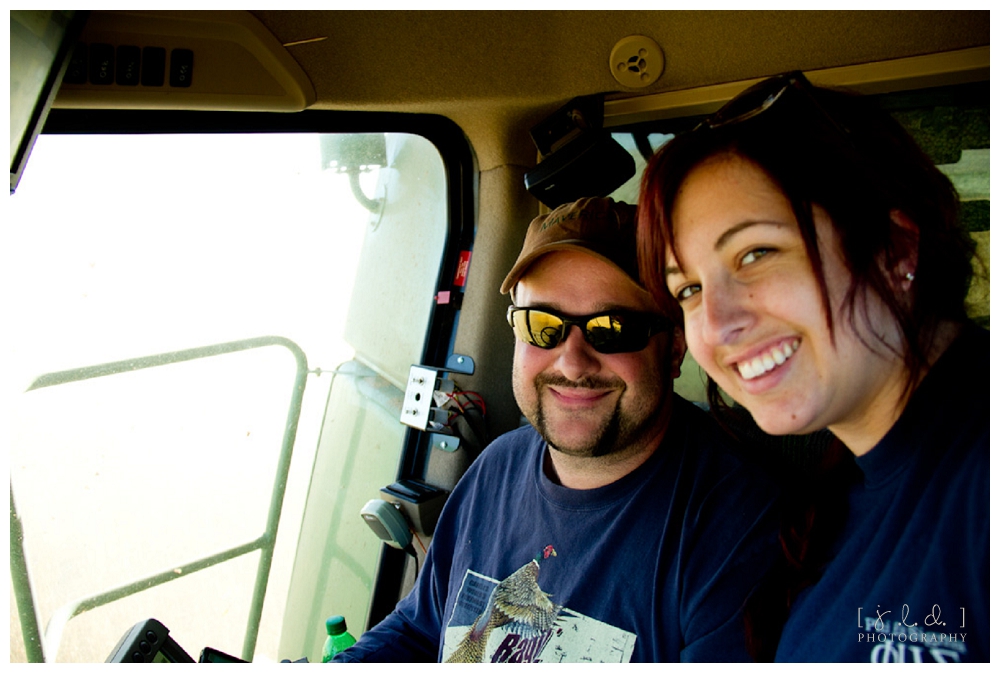

I love this post! Absolutely beautiful photos.
excellent!!!